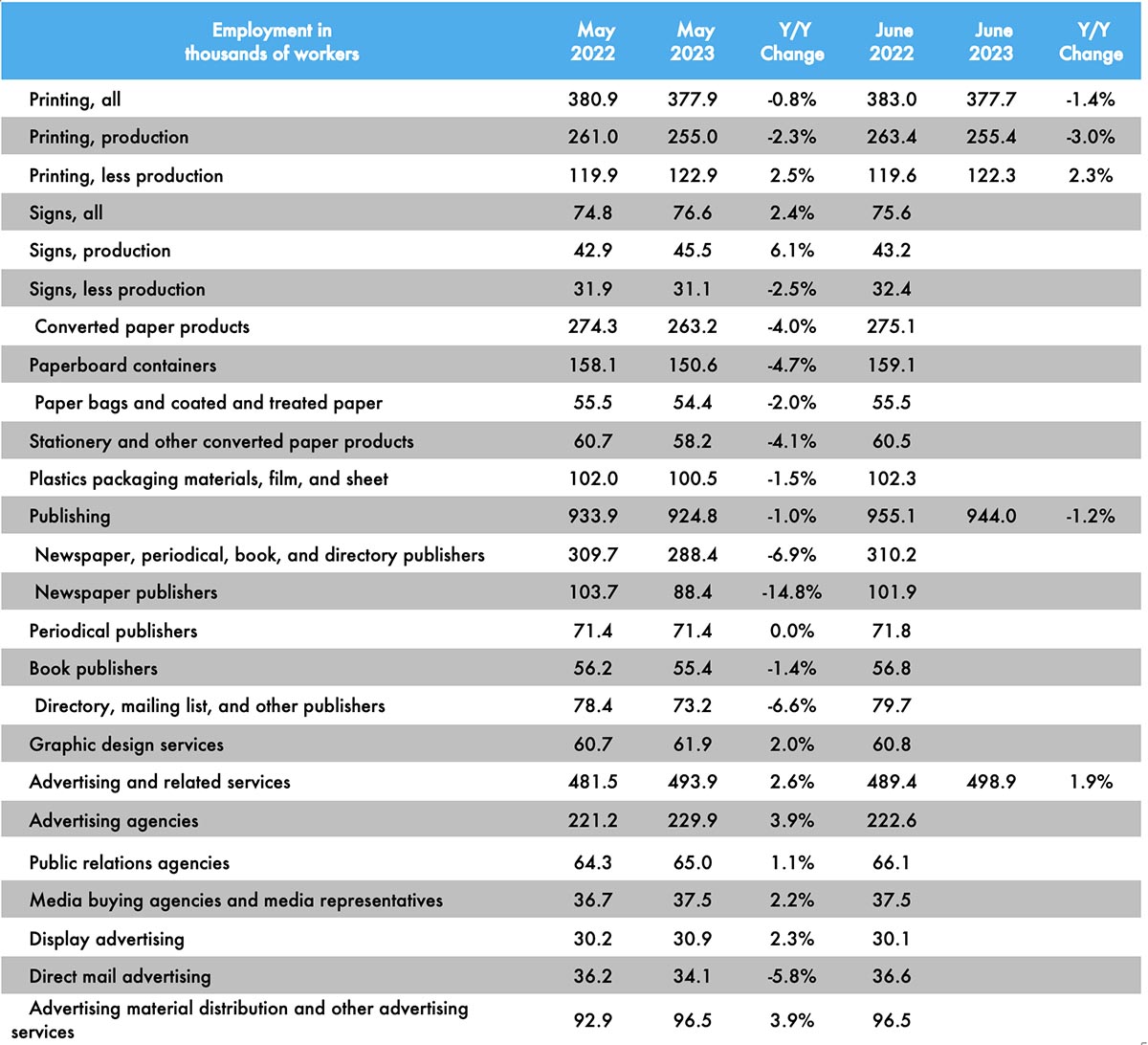
The printing employment situation flattened out over the course of the spring, and has remained so as we headed into summer. Overall printing employment in June 2023 was down -0.2% from May and drilling into carpeted/non-carpeted areas, production employment was up 0.4% while non-production employment was down -0.6%.
In terms of publishing, overall publishing employment was down 1.2% from May to June, while advertising and related services was up 1.9%.
Earlier this year, we started adding a number of other business categories to our employment table, the reporting of which, as you may recall from our tracking of the publishing and creative markets, lags a month.
Overall employment in the signage industry was down -0.8% from April to May, with sign production employment up 0.4%.
Converted paper products employment was down -0.6% from April to May, with paperboard container employment down 1.3% and paper bags and coated and treated paper employment down -0.2%.
Looking at some specific publishing and creative segments, from April to May, periodical publishing employment was down a scant -0.1%, while newspaper publishing employment was down -0.6% and book publishing down -0.5%. Graphic design is the star of the month, with employment up 2.3%. Ad agency employment was unchanged, and PR agencies were up 0.6%. Direct mail advertising employment was down -0.6%.
As for June employment in general, the BLS reported on July 7 that total nonfarm payroll employment increased by 209,000 in June, and the unemployment rate ticked down from 3.7% to 3.6%. Meanwhile, April employment was revised down by 77,000 and May employment was revised down by 33,000, for a total downward revision in April/May of 110,000.
The U-6 rate (the so-called “real” unemployment rate which includes not just those currently unemployed but also those who are underemployed, marginally attached to the workforce, and have given up looking for work) ticked up from 6.7% to 6.9%.
The labor force participation rate was unchanged from May to June at 62.6% and the employment-to-population ratio was unchanged at 60.3%. The labor force participation rate for 24–54-year-olds also ticked up from 83.4% to 83.5%.
Although not an earth-shattering employment report, it was still solid and generally about what economists expected.













